Information is king for any business. With the correct information, your company can take advantage of any situation to increase profitability, productivity, and customer loyalty. It would be substantially ahead of your competition in every aspect of the market. Therefore, you can profit from turning your business into a data-driven company.
Data-driven companies are the ones that collect and analyze data and leverage that information in their decision-making processes. Online retail and e-commerce, especially with the use of big data, are great candidates for applying that incredibly effective practice into their business.
The main goal of applying more advanced technology to your business is to help you close more sales. In a few words, we call it Smart Selling.
In this article, I'll share the best insights on how to leverage data on e-commerce and retail websites, how to apply big data in your company, and, finally, how to become a data-driven organization.
What is a Data-driven Company?
Data-driven companies do more than just collect data. They turn the data into actionable insights. These organizations then base their critical business decisions on those insights, but it goes deeper than that.
This use of data is ubiquitous, forming key components of the culture and workflow. All departments can access the same summative information and analytics. Anything potentially confusing or contradictory is monitored to ensure that everything remains accurate and up to date in real-time.
These companies even go out of their way to encourage their employees to embrace, explore, and examine data in every business task or activity. Everyone independently uses all relevant data available to them regardless of the size or source. Some data-driven companies even allow employee dissent if the inquiries stem from data analysis.
What is the Role of Big Data in Data-Driven Companies?
All data-driven companies want data analysis fully integrated into their operations. It should be second nature. The first thing everyone considers. Such a strategy and culture require consistent and reliable data collection methods. However, market information is rarely reliable or consistent.
Business data can come from a variety of sources. It can come from your customers. It can come from your staff and machinery. It can come from your partners. Most of it might be text, but it may also include video, audio, and other multimedia documentation. This seemingly unrelatable mess is what is known as big data.
These huge data sets require specialized tools and techniques to analyze for useful insights, patterns, trends, and associations. Fortunately, the companies who take up that challenge are heavily rewarded. Once organized, analyzed, and managed, big data will immediately improve your logistics and operations.
Big data-driven companies know how to reduce costs and use their resources more efficiently. They know when to develop new products and optimize their existing ones. They also enjoy improved productivity, employee engagement, and customer satisfaction.
What are Big Data Personas?
You must collate big data before you can use it. While you are free to use any method or technique, most successful data-driven companies choose personas.
Big data personas are imaginary constructs that represent behavioral and demographic groupings of real people. They help decision-makers visualize these groups by providing an interactive interface to the underlying data and analytics.
Through them, you can generate practical and theoretical procedures for marketing, design, advertisements, human resources, and other domains.
How Big Data Helps Improve Customer Satisfaction?
Customers increasingly use favorable customer experiences to help differentiate between brands and products. In the corporate world, we call that customer-centricity. In other words, it's the practice of developing products and services focused on the customer's needs and desires.
As such, companies that offer great customer service and personalized experiences will have higher growth potential than those that do not. Fortunately, you can offer these services through the use and analysis of big data.
Big data can reveal the key customer intentions and behaviors you need to provide the best service possible. Acting on these insights can lead to higher customer satisfaction, brand loyalty, and repeat purchases. How you can do that will vary from one situation to the next, but they generally fall in one of the following categories.
- Personalized customer service - deeper insights into customer needs and preferences
- Multi-channel support - efficient communication with your customers through any channel or device with seamless transfers
- Increase problem-solving efficiency - Answer customer questions and inquiries with real solutions that solve their problems
- Decrease response time - understand your weak points and how to improve them across multiple channels. Also enables you to provide prompt service as needed
- Agent analysis - evaluate customer service agent performance and reliability to ensure the customer always gets the best service possible
Big Data Application in eCommerce Websites
Big data analysis can turn your organization into a data-driven one. You just need the right implementation based on your situation and the needs of your customers. Of course, the use of AI in -e-commerce and retail websites is a crucial step in that journey.
In the meantime, here are a few common ways companies already use big data in their e-commerce endeavors.
- Forecasting - predict and take advantage of market trends and shifts before they happen
- Personalization - provide personalized experiences and content to each customer
- Customer Segmentation - data can inform a better way of organizing and grouping different customer profiles
- Merchandising campaigns - Choose and present the right products and messages at the right time for the right price and quantity to maximize sales
- Reduce churn and lost sales - know why and when customers do not convert as well as the right measures to bring them back
- Feedbacks and insights - monitor the effectiveness of marketing campaigns and promotions in real-time so you can make any necessary changes
Ecommerce Data Management
Ecommerce businesses deal with numerous disparate systems for data gathering, storage, and analysis. To gain any useful insights, you must unify and organize this data in a way that is easily accessible by everyone who needs it.
Establishing a centralized e-commerce data management system is one effective solution. Such as system would make the data available through multiple applications and formats. You also get better process and configuration management along with improved data security and integrity.
Other benefits include:
- A complete understanding of your customers
- Optimize target audience filtering and branding
- Precisely target and personalize content and advertisements
- Improved collaboration between your staff, partners, and vendors
- Discover new prospective customers and markets
- Improved decision making
- Automate repetitive tasks for more consistent results
Ecommerce Big Data Analytics
Using big data in e-commerce requires the right analytics tools that can reveal hidden data trends. These tools will help you create more successful marketing strategies, offer better products and services, and produce more revenue. You will also make more educated business decisions based on actual market conditions.
Why is it Important to be Data-Driven?
Customers are constantly bombarded with advertisements and sales pitches. They see them on social media, billboards, and every website they visit. As a result, it takes a lot more for an advertisement to not only catch their attention but also lead to conversion.
This is where data and analytics can make a difference.
According to Forbes, your organization can see increased sales by 54% by using data and analytics to target potential customers. But why is that? Ecommerce big data analysis connects you to the customers who are most likely to convert. For example, an abandoned cart reminder can help convert a customer who likes your product but has not completed the sale yet.
Data-driven organizations also fall into different levels of big data usage. This Maturity Model can help you understand where big data stands in your decision-making processes and where you can progress to the next level.
However, using data peripherally is not enough to maximize sales. You must allow the data to govern your overall business strategy.
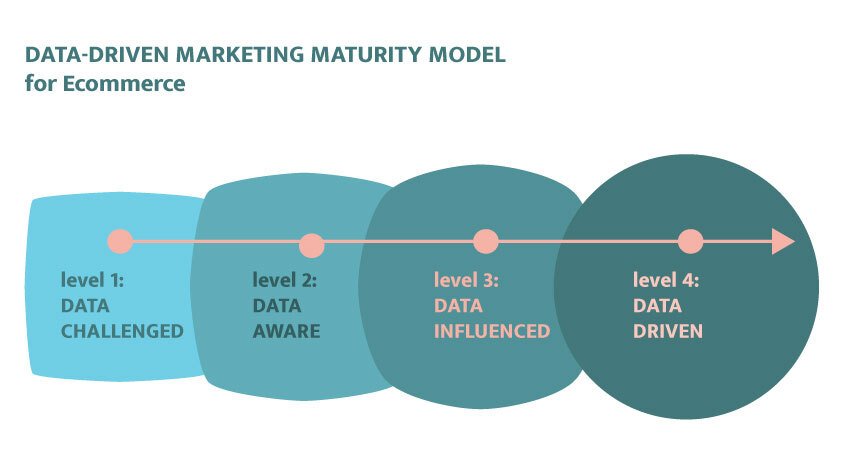
How to Become Data-Driven? A Guide in 4 Steps
But how do I know what stage my company is at? How do I move to the next level?
Keep reading to find out.
Data Challenged

Identifying characteristics
A data-challenged company does not use the data it collects, or it isn’t collecting data at all. Realistically, most companies collect data, whether they know it or not. The problem usually lies in not using the data or the data being so fragmented that it is essentially useless across silos.
The company could also lack the personnel to analyze the data effectively. It doesn’t have to be a formal data analyst position. It could be someone with a good eye for numbers and analysis skills.
Other obstacles to data use may include lack of time to analyze data, technology limitations, resistance to change, or fear of truth. You can overcome these obstacles with enough time and effort. However, prioritizing data analysis can be daunting in an already overwhelming business environment.
Meanwhile, the best sign that your organization is data challenged is not knowing the data sources your company uses. If you don’t know them, you probably aren’t using them. Therefore, you must understand them first before you attempt to identify the following data points:
- Average Order Value (AOV)
- Customer Lifetime Value (LTV)
- Repeat Buyer Rate
- Cart Abandonment Rate
How to level up
Because you are starting from scratch, the transition to Data-Aware is relatively simple. First, take a look at what you already have. Make sure that your current system can integrate your customers’ behavioral data into your marketing software. You might have what you need already! You can then supplement your current infrastructure with add-ons. But remember, at the end of the day, becoming more data-driven will pay for itself. So, take a deep breath and get ready to make some changes.
“The price of doing the same old thing is far higher than the price of change.”
- Bill Clinton
Also make sure that you partner with an expert at this stage, to save yourself a headache later. There are many options available, and they will all claim to be a one-stop shop. It can be hard to navigate through all the clutter. This is where an expert can bridge the gap. They can provide guidance on what each platform will be able to offer you now and in the future.
Data-Aware

Identifying characteristics
A data-aware company knows the value of data but may not have unlocked it yet. Characteristics that indicate a data-aware company may include
- A focus on data collection regardless of its usefulness
- Minor integration between systems (shopping cart, marketing software, etc.)
- Automation of basic customer communications (welcome email funnels, feedback surveys, etc.)
- Data is present, but no actionable analysis has been done
If your company falls in this category, it’s time to level up and allow your data to influence your all-around strategy.
How to level up
At this point, you have some data, and you need to know what to do with it. The first thing you want to do is take stock of what data you have. Identify the value of each data source and document. In order to understand the value, you need to know if it is standardized and complete.
Once you have a full understanding of your current data and its value, get buy-in from all silos. You need the whole team on the same page. Data is going to be in charge and some people might feel like their creativity will be devalued. But the truth is that data will improve the bottom line more often and more significantly than a creative idea with no data to support it.
Data Influenced
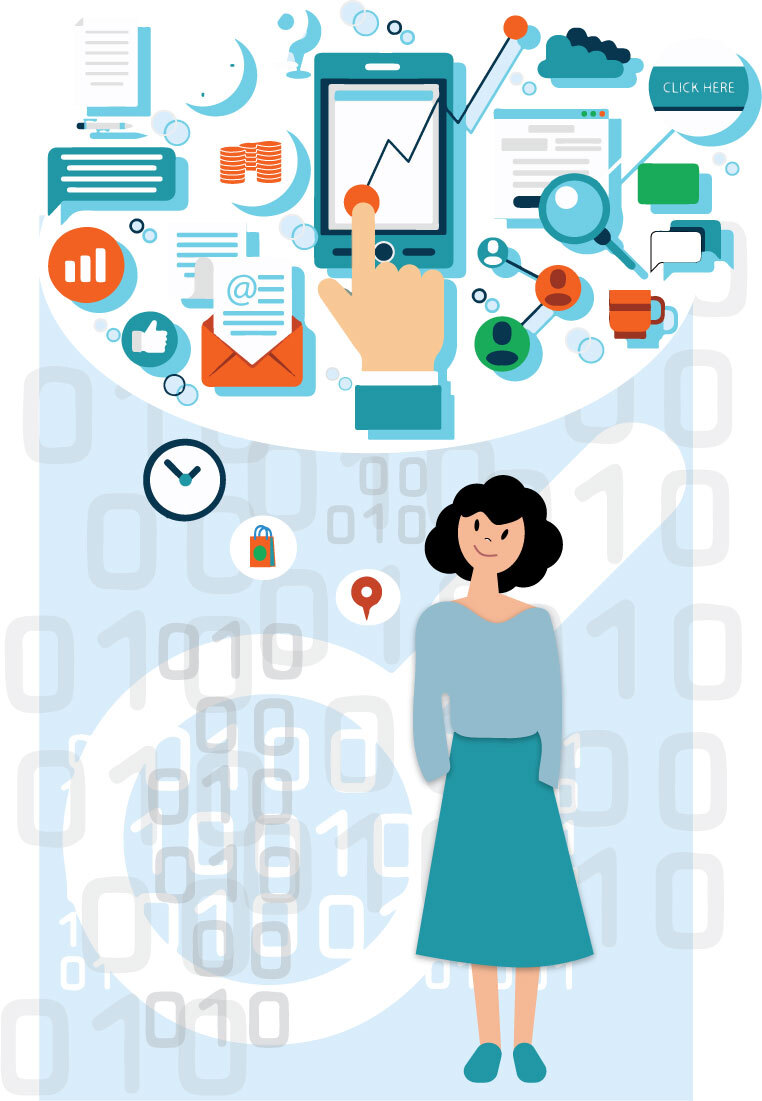
Identifying characteristics
When you reach the stage of being data influenced, you are now using the data in a meaningful way. Your company gathers insights from data collected and uses them to make decisions.
Data-influenced companies also have started segmenting their customers using data. Remember the welcome email funnels we mentioned earlier? Data would now influence which customers received which version of the email funnel to best connect with them.
How to level up
I know, this seems like the end. What more could there be? You are using the data in a meaningful way to influence decisions. That’s enough, right?
Not quite.
In order to reap the full benefit of your data, your company must become data-driven. So don’t get too comfortable in the data-influenced stage. Evaluate your current team to see if you are set up to become fully data-driven, and get an expert on the team. The expert could be an on-staff data scientist or an external partner such as Cetrix. External partners can be a great way to economically and efficiently move into full data maturity.
Data-Driven

This is the final stage of data maturity. In this stage, companies allow data to govern their strategies. Planning stems from data insights, and all decisions have clearly defined outcome metrics.
Businesses at this stage have seamless communication with customers that is always personalized. Since data drives all strategies, communication with customers always feels as if it was made for them. They feel like the company has taken the time to understand their pain points and how to address them.
Businesses at this stage also have optimal efficiency. There is little room for waste with the whole team working together and driven by hard data. Data gives a company a solid foundation based on facts and the strategies that are most likely to increase sales.
The first step to becoming data-driven is recognizing where your company sits on the maturity model. Once you know where you’re at, we will meet you right there. Let us know at Cetrix how we can help your journey to become fully data-driven and make the most of your data.
Give us a call and email us anytime! We are here to help.

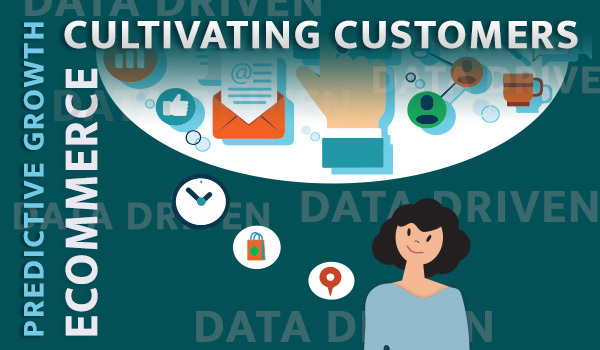

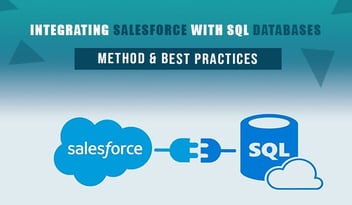
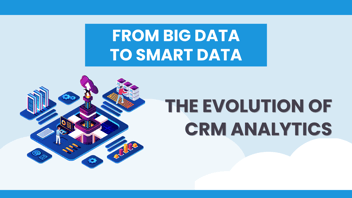
Leave a Comment